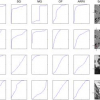Free Online Productivity Tools
i2Speak
i2Symbol
i2OCR
iTex2Img
iWeb2Print
iWeb2Shot
i2Type
iPdf2Split
iPdf2Merge
i2Bopomofo
i2Arabic
i2Style
i2Image
i2PDF
iLatex2Rtf
Sci2ools
CVPR
2003
IEEE
2003
IEEE
Evaluation of Local Models of Dynamic Backgrounds
Background subtraction is the first step of many video surveillance applications. What is considered background varies by application, and may include regular, systematic, or complex motions. This paper explores the use of several different local spatio-temporal models of a background, defined at each pixel in the image. We present experiments with real image data and conclude that appropriate local representations are sufficient to make background models of complicated real world motions. Empirical studies illustrate, for example, that an optical flow-based model is able to detect emergency vehicles whose motion is different from those typically observed in traffic scenes. We conclude that "different models are appropriate for different scenes", but give criteria by which one can choose which model will be best.
Appropriate Local Representations | Background Models | Background Subtraction | Computer Vision | CVPR 2003 | Local Spatio-temporal Models | Real World Motions |
| Added | 12 Oct 2009 |
| Updated | 29 Oct 2009 |
| Type | Conference |
| Year | 2003 |
| Where | CVPR |
| Authors | Robert Pless, John Larson, Scott Siebers, Ben Westover |
Comments (0)

